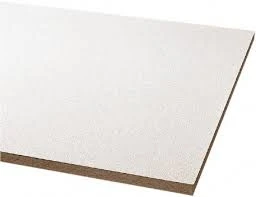- Afrikaans
- Albanian
- Amharic
- Arabic
- Armenian
- Azerbaijani
- Basque
- Belarusian
- Bengali
- Bosnian
- Bulgarian
- Catalan
- Cebuano
- Corsican
- Croatian
- Czech
- Danish
- Dutch
- English
- Esperanto
- Estonian
- French
- German
- Greek
- Hindi
- Indonesian
- irish
- Italian
- Japanese
- Korean
- Lao
- Malay
- Myanmar
- Norwegian
- Norwegian
- Polish
- Portuguese
- Romanian
- Russian
- Serbian
- Spanish
- Swedish
- Thai
- Turkish
- Ukrainian
- Uzbek
- Vietnamese
Лис . 06, 2024 01:39 Back to list
ceiling access panel design
Ceiling Access Panel Design Enhancing Accessibility and Aesthetics
In modern construction and interior design, the significance of ceiling access panels cannot be overstated. These panels provide essential access to vital systems such as plumbing, electrical wiring, and HVAC components while ensuring that the aesthetics of a space are not compromised. A well-designed access panel harmonizes functionality with visual appeal, making it an essential component in both residential and commercial applications.
Functionality and Purpose
The primary purpose of ceiling access panels is to provide easy entry to concealed systems. These panels allow maintenance personnel to reach critical infrastructure without the need to dismantle walls or ceilings, thus saving time and reducing potential damage during service work. Whether it’s for routine inspections or emergency repairs, a ceiling access panel streamlines the process, making it more efficient and less disruptive to building occupants.
Many panels are designed with a focus on safety and security. For instance, tamper-proof options prevent unauthorized access, especially in commercial settings where sensitive equipment may be housed. Additionally, fire-rated access panels are available for use in areas that require compliance with fire codes, ensuring that safety standards are met without sacrificing accessibility.
Aesthetic Integration
ceiling access panel design

While functionality is paramount, the design of ceiling access panels also plays a crucial role in the overall aesthetic of a space. In contemporary design, access panels are designed to blend seamlessly with the surrounding ceiling. Manufacturers offer panels that can be painted or finished to match the ceiling material, whether it be drywall, tile, or plaster. This design approach minimizes the visual impact of the panel, making it nearly invisible to occupants while still providing the necessary access.
Moreover, the trend towards modern minimalist design has led to the development of sleek access panels that feature flush designs and discreet hinges. These panels can be designed to complement various architectural styles, ensuring that they do not detract from the overall design of a space. In environments such as art galleries or high-end retail stores, where aesthetics are critical, these enhanced designs offer a practical solution without compromising visual integrity.
Innovative Features
Recent advancements in access panel design include features that enhance usability and security. For instance, panels with magnetic latches or easy-release mechanisms facilitate quick access while ensuring a secure closure. Some models incorporate soundproofing materials to minimize noise from mechanical systems, creating a more pleasant indoor environment. Technology has also influenced design, with some modern access panels featuring smart locks or sensors that integrate with building management systems, providing real-time monitoring and enhanced security.
Conclusion
In conclusion, the design of ceiling access panels plays a vital role in modern architecture, balancing the need for functionality with aesthetic considerations. By streamlining access to essential building systems while ensuring an unobtrusive appearance, these panels enhance both the practicality and beauty of spaces. As construction practices evolve and the emphasis on design integrity continues to grow, ceiling access panels will undoubtedly adapt, embracing new technologies and design philosophies to meet the needs of future constructions.
-
Transform Interiors with PVC Gypsum Ceiling: A Stylish, Durable, and Moisture-Resistant SolutionNewsMay.19,2025
-
The Smart Interior Upgrade: Discover the Durability and Versatility of Gypsum Ceiling Access Panel SolutionsNewsMay.19,2025
-
The Smart Choice for Interior Design: Discover the Value of PVC Gypsum Ceiling SolutionsNewsMay.19,2025
-
Mineral Fiber Ceiling Tiles: The Smart Blend of Performance and AestheticsNewsMay.19,2025
-
Mineral Fiber Ceiling Tiles: The Superior Choice Over Gypsum for Sound and Fire SafetyNewsMay.19,2025
-
Mineral Fiber Ceiling Tiles: Eco-Friendly Strength and Style for Every CeilingNewsMay.19,2025







